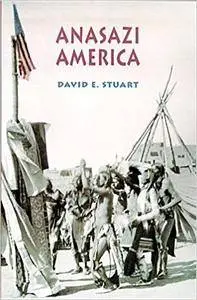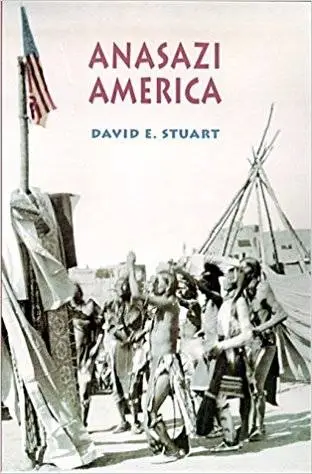David E. Stuart, "Anasazi America: Seventeen Centuries on the Road from Center Place"
2000 | pages: 265 | ISBN: 0826321798 | PDF | 5,8 mb
2000 | pages: 265 | ISBN: 0826321798 | PDF | 5,8 mb
At the height of their power in the late eleventh century, the Chaco Anasazi dominated a territory in the American Southwest larger than any European principality of the time. A vast and powerful alliance of thousands of farming hamlets and nearly 100 spectacular towns integrated the region through economic and religious ties, and the whole system was interconnected with hundreds of miles of roads. It took these Anasazi farmers more than seven centuries to lay the agricultural, organizational, and technological groundwork for the creation of classic Chacoan civilization, which lasted about 200 years–only to collapse spectacularly in a mere 40.
Why did such a great society collapse? Who survived? Why? In this lively book anthropologist/archaeologist David Stuart presents answers to these questions that offer useful lessons to modern societies. His account of the rise and fall of the Chaco Anasazi brings to life the people known to us today as the architects of Chaco Canyon, the spectacular national park in New Mexico that thousands of tourists visit every year.
"Chaco's failure, Stuart argues, was a failure to adapt to the consequences of rapid growth. Foremost among Chacoans' problems were misuse of farmland, malnutrition, loss of community, and inability to deal with climatic catastrophe. The descendants of the Anasazi, the Pueblo Indians of the Southwest, adapted strategically to minimize the impact of these problems. Stuart sees the contrasting fates of the Anasazi and their Pueblo descendants as a parable for modern societies.
Stuart's contributions reach out with commendable clarity, backed by well-researched discussions of archaeological evidence and impressive endnotes. Perhaps the book's greatest contribution is a well-crafted dialogue that unites archaeology with our present world. Anasazi America contrasts community conflict one thousand years ago with the bloodshed in Yugoslavia and Northern Ireland, making links that bring the Native American past into a tumultuous yet understandable present. Stuart relates the painful circumstances of high infant mortality among the ancestral Pueblo peoples to similarly devastating conditions in less economically developed parts of our own world. Stuart's depiction of the Chaco system as a failed experiment in power politics and overspecialized agricultural strategies is both compelling and correct. . . . From a dry and dusty archaeology, Stuart crafts an understandable story that is depicted in a thought-provoking and contemporary context."–Michael Adler, Science Magazine
"An unusual and important book that calls attention to parallels between an ancient southwestern culture and modern America. Stuart has provided a rich and thought-provoking survey of the rise and collapse of the Chaco phenomenon, based on extraordinary recent findings of archaeologists. The author's clear, unpretentious prose will delight the general reader and will be appreciated by specialists seeking a straightforward summary. I can recommend this splendid work without hesitation."–Marc Simmons
"A passionate and provocative book which argues that we have much to learn from the Chaco Anasazi and their successors. Every archaeologist, every student of anthropology, and anyone interested in the future of industrial society should read this stimulating essay, then read it again. Few books on the Southwest have such a general and urgent appeal."–Brian Fagan
My Link



